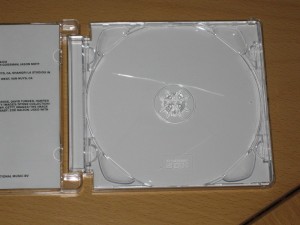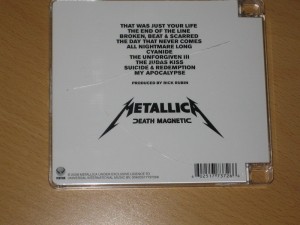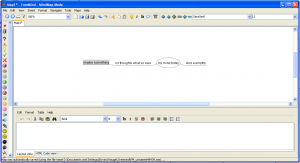Building a combined HTPC and gaming rig for the living room is according to a lot of people a stillborn idea. Nevertheless, I have a HDTV and a surround setup and I want to enjoy PC games using it. Where the HTPC is slim, cool and silent the gaming rig is big, powerful and noisy. Finding a good compromise between these two extremes is challenging and much like trying to cross a cat with an elephant.
To build a good HTCP you would want a PC with a decent storage, capable of high definition (HD) video playback. It should look good in your living room, be small, slim and silent and have a high WAF rating. Most modern computers with an integrated graphic chip coupled with a CPU with low power requirements are able to do the job. Low power requirements mean limited heat which again means no or only very few fans for cooling. Platforms based on AMD’s 780 or Nvidias GeForce 8300 based chipsets have for these reasons been popular.
A gaming rig should produce as many polygons as possible per second. To do this you need a very power hungry CPU and GPU. Power means heat, and to move this heat away from the CPU and the GPU you will need large coolers and a lot of fans. This combined with the fact that most graphics cards are quite long you would want a quite large case for this gaming computer.
For fans there are some simple rules. The larger the fan is the more hot air does it move per second. The higher the velocity of the fan is the more air does it move per second but the noise will rise to unbearable levels.
Requirements
So let us look at the requirements for a HTPC/Gaming computer. I’ll start with the one which are absolute. Since I have a girlfriend it has to look good! Looking good would in this case mean black (to match the other equipment), small and probably shiny.
Second, it should be powerful enough to run modern PC games at resolutions up to 1920*1080. This would include a large and hot graphics card which requires cooling and a pretty deep case. I will also need a decent CPU which would require good cooling. Big tower coolers like TRUE could reach up 160mm but they could be fitted with one or two 120mm fans.
Third, it should be silent. This would include water cooling or really big coolers and several large fans at low velocity. Water cooling would have been fun but it is a bit expensive and I don’t really bother right now. Since I am no millionaire it cannot be too expensive either.
To sum up, it should be a large good looking case which looks small and has room for large coolers, large fans, long graphics cards and a couple of hard drives. Most HTPC cases are small so it is a bit of a challenge to find something which matches all these requirements. However, after searching the web for a long time I found some candidates. And the nominees are:
Antec Fusion 430 Black

This case looks great, uses two 120mm fans for cooling, the critics are great and the price is quite good (about 1200 NOK = 150€). Unfortunately, a bit too small (445mm (W) x 146mm (H) x 414mm (D)) for my planned PC.
Review:
Antec Performance One P182

Another case from Antec. I really love this one, it costs less than 1000 NOK (125€), it is big (520mm (H) x 210mm (W) x 510mm (D)) and has a lot of space for hardware, coolers and five 120mm fans. Unfortunately it is a tower, not a desktop case. If I was looking for a pure gaming rig I would have gone for this one but since it has to fit in the living room it is a no go.
Reviews:
Silverstone CW02

This case is another beauty, at least in my eyes. It is quite tall (435 mm (W) x 225mm (H) x 440 mm (D)) and a large cooler should fit inside. It has quite large fans with one 120mm fan and two 92mm fans. Unfortunately it got a pretty low WAF rating, it is a bit expensive (3800 NOK = 450€) and it could be a problem to fit long graphics cards so was not a winner.
Reviews
Silverstone LC-20

This case has room for in total two 92mm and three 80mm fans. It is fairly large (430 mm (W) x 170 mm (H) x 430 mm (D)) but neither really large coolers nor long graphics cards would fit. It got an overall good WAF rating and the price is attractive (about 1000/1500 NOK or 125/200€ without/with the LCD ). However, there is something to it which I did not like. 80mm fans are perhaps a bit small and there is not plenty of room inside of it.
Reviews
Lian Li PC-C32B
This is the case I selected. It is no way near flawless but it is a decent compromise. It is very deep (426mm (W) x 167mm (H) x 530mm (D)) which would allow long graphics cards, and standard ATX motherboards and power supplies to enter. It has room for two 120mm and one 80mm fans. Coolers up to 140mm should enter according a very helpful forum user at hw.no . The fans should according to some reviews be replaced with some, less nosier ones. The fact that the case is pretty deep is also somewhat of a problem because it will take a lot of space in the living room. Hopefully this will not be too much of a problem. The price was about 1700 NOK (210€). It looks great (without the rack mount handles) and it got a very good WAF rating.
I am eagerly waiting for it to arrive in the mail tomorrow or one of the next few days and I will probably post some images when I get my hands on it. Having decided on the case it only remains to decide on all the other parts of the PC …
Reviews
Some Case Providers
I found several other nice cases when searching for this one and I recommend you to check out the following if you are looking for a HTPC case yourself.








